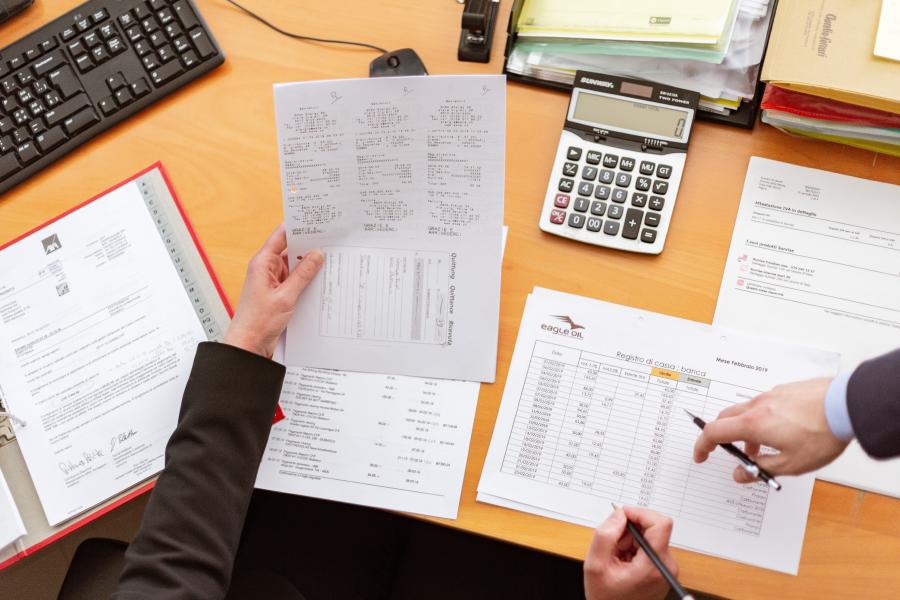
Whether it’s called mastery-based or competency-based education, the premise is the same: education should focus on teaching in a way that each and every learner truly masters the content before they moving on to the next thing.
What is Mastery Learning?
Mastery learning is a paradigm shift from the mainstream model of education in the United States. In a traditional classroom, learners focus on retaining as much information as possible within a given amount of time (Schaef, 2016). Once the unit is over, all learners continue to the next topic. In a mastery-based classroom, learners focus on mastering a specific amount of information with no set time-frame (Schaef, 2016). Once the learner has mastered the unit, then they move on to the next topic. This shifts the fundamental focus of education from the assessment of learning to the act learning itself.
While this approach to learning is far from being revolutionary (many professions throughout history were built on the idea of the master-apprentice relationship), adaptations of this model for modern education emerged during the 1960s, with the two main models being Bloom’s Learning for Mastery (LFM) and Keller’s Personalized System of Instruction (PSI) which were both published in 1968 (Kulik, 1983, as cited in Kulik et al., 1990).
Comparison of Bloom's and Keller's Models
In both LFM and PSI courses, material to be learned is divided into short units, and students take formative tests on each unit of material (Bloom, 1968; Keller, 1968). LFM and PSI differ in several respects, however. Lessons in LFM courses are teacher presented, and students move through these courses at a uniform, teacher-controlled pace. Lessons in PSI courses are presented largely through written materials, and students move through these lessons at their own rates. Students who fail unit quizzes in PSI courses must restudy material and take tests on the material until they are able to demonstrate mastery. Students who fail unit quizzes in LFM courses usually receive individual or group tutorial help on the unit before moving on to new material.Kulik et al. (1990)
Skeptics of mastery learning might argue that it is impractical to provide each learner with the time necessary to master a skill, or even that each learner is not capable of achieving true mastery of every topic. They might believe that some learners simply have more natural talent or intelligence. However, the research is actually to the contrary of these claims.
In a study surveying a variety of experts across a multitude of disciplines, none of their success traced backed to some sort innate talent or genetic predisposition, but all of their expertise could be explained by a single trait: deliberate practice (Ericsson & Pool, 2017). This concept of deliberate practice has four main tenants: having well-defined goals, being focused, receiving focused feedback, and pushing past one’s comfort zone (Ericsson & Pool, 2017). They found no shortcut to success, just hard work, which suggests the idea of mastery is supported in believing that everyone is capable of being an expert in a field with the right level of support. Interestingly enough, the tenants of deliberate practice are the same traits that you see within mastery learning environments.
Mastery Learning in the Classroom
1. Diagnostic Pre-Assessment

In a traditional classroom, educators may utilize a pre-assessment as a way to check for prior knowledge of a topic. They then take this data to see if there are any topics they can skip or move through more quickly.
In a mastery-based classroom, educators utilize a pre-assessment as a way to check for pre-requisite knowledge of a topic (Guskey, 2010). They then take this data to pre-teach any necessary pre-requisite knowledge before the learner tries to learn the content based on it (Guskey, 2010).
The disadvantage to this method is that it can add 10-20% more instructional time at the start of a unit (Block, Efthim, & Burns, 1989 as cited in Guskey, 2010). Fortunately, by taking the time to provide this level of individualized assistance at the start of a unit or course, the advantage comes in the amount of remediation needed as the unit or course progresses tends to decrease to the point that overall learning evens out (Guskey, 2008 as cited in Guskey, 2010). This is a proactive approach to remediation that ensures each learner understands every concept from the start, which removes future confusion or misunderstanding when the concepts compound on each other.
2. Focused Feedback

In a traditional classroom, educators create assignments for learners to assess their understanding over a topic. Once learners complete these assignments, they turn them in for the educator to grade and provide feedback. If the majority of learners do well, the class continues to the next topic.
In a mastery-based classroom, educators regularly monitor the individual progress of each learner in order to provide highly individualized and prescriptive feedback (Hattie & Timperley, 2007 as cited in Guskey, 2010). To do this, educators utilize a variety of assessments, including conferences, focusing on smaller segments of information to better gauge individual understanding (Guskey, 2010).
The disadvantage of this method is that it can be time consuming and exhausting to provide highly-quality, individualized feedback to every learner frequently enough to effectively monitor progresses. Fortunately, this provides similar advantages as using diagnostic pre-assessments. By ensuring that learners are progressing as expected, misunderstandings are caught early, which results in less confusion later.
3. Flexible Pacing

In a traditional classroom, educators develop units that cover a set amount of content. Based on the amount of content and the learning activities planned, the educator determines how long the unit will be. Units typically end with learners taking a test and then immediately continuing on to the next unit, often before they know how they did on the previous unit.
In a mastery-based classroom, the educator develops units that cover a set amount of content, including a final assessment, but there is no established timeline for completion. The educator may develop a pacing guide for learners and then structure the class around this pacing guide, but learners do not progress to the next unit until they fully master the current topic
The disadvantage of this method is that the traditional school calendar and structure does provide the flexibility needed to completely utilize this aspect, particularly at the end of the year. The advantage of this aspect of mastery learning is that it ensures that learners are confident in their ability to complete the new content, without causing stress of trying to rush their learning to arbitrary due dates.
4. Growth Mindset Assessments

In a traditional classroom, learners complete an assessment and receive a grade. This grade defines how much they learned of a particular topic, and then they are not given the opportunity to demonstrate new knowledge after going through remediation.
In a mastery-based classroom, learners complete an assessment and receive a grade. If this grade does not demonstrate mastery, the learner is provided with personalized remediation to address the gap in knowledge. Learners are then reassessed to check for mastery. This process can be repeated as many times as needed for the learner.
The disadvantage of this aspect is that it can be frustrating and embarrassing for learners that have the fixed mindset that is typical of traditional classrooms. Learners with less self-confidence or more toxic relationships could take the idea of remediation very hard and could even be subject to social ridicule until a cultural shift is made. The advantage of this aspect is that it encourages learners to focus on the process of learning rather than the resulting grade. It is important that learners understand that everyone has something they struggle with and learning is a journey that is sometimes accompanied by failure, and that it is okay. Part of deliberate practice is getting outside of our comfort zone, and if we aren’t struggling, we aren’t really learning (Ericsson & Pool, 2017). As an added bonus, it shifts motivation to learn from an external source (the grade) to an internal source (the desire for knowledge).
5. Define Mastery

In a traditional classroom, a passing grade is defined on a continuum with different levels of mastery. Learners that score a 70% or greater are considered passing (sufficient mastery), but are then separated into by letter (A, B, C, D, F) or numeric grades (100-90, 89-80, 79-70, 69-0; 4, 3, 2, 1, 0) that further separate them by degree of mastery.
In a mastery-based classroom, educators work together to develop a definition of what mastery is, including creating a consistent set of tools to assess learner content knowledge (Schaef, 2016). Learners are said to master (or pass) the content when they have met the requirements for mastery as defined by the educators. Learners are then awarded either a pass or fail for assignments.
One disadvantage of this aspect is that learners who typically thrive off of external motivating factors, such as competition among grades or GPA, may not have the same level of motivation as they had in a traditional classroom until they adapt to the new system. Within the same realm, it makes it harder to award more objective merit-based awards, such as Valedictorian, without degrees of mastery. An advantage of this aspect is that educators of subsequent courses can have greater certainty of what learners should know, and to what degree they should know it. This allows for more focused an effective instructional design. Additionally, learners have a clearer picture of what they expectations are. This provides them with a clearer target when studying or working on assignments.
6. Flipped Classroom

In a traditional classroom, the educator teaches lessons during the school day. Learners take home an assignment to reinforce the content and bring it back the next day.
In a mastery-based classroom, the learners learn the content online from either educator-produced videos, or other learning objects. Class time is used to clarify understanding, group discussions, and to work on collaborative assignments.
The disadvantage of this aspect is that learners may not have adequate access to technology at home. This would limit their ability to effectively take advantage of the this method. There are numerous advantages of this method for mastery learning. To start, learners are able to work through the content at their own pace to ensure that they understand everything. If they need to review anything at any point, they can easily rewind the video or return to the article. Additionally, educators can create basic assessments on the learning management system to allow the learners to quickly self-assess their knowledge prior to coming to class. These assessments could provide immediate feedback and remediation to aid that individual learner on their path to content mastery. Lastly, by moving instruction online learners can have more collaborative and/or project opportunities. This gives the educator more time to visit with each learner in class to assess their understanding.
References
Ericsson, A & Pool, R. (2017). Peak: Secrets from the New Science of Expertise. Eamon Dolan/Houghton Mifflin Harcourt.
Guskey, T. (2010). Lessons of Mastery Learning. Educational leadership: journal of the Department of Supervision and Curriculum Development, N.E.A 68(2), 52-57. http://www.ascd.org/publications/educational-leadership/oct10/vol68/num02/Lessons-of-Mastery-Learning.aspx
Kulik, C.-L. C., Kulik, J. A., & Bangert-Drowns, R. L. (1990). Effectiveness of Mastery Learning Programs: A Meta-Analysis. Review of Educational Research, 60(2), 265–299. https://doi.org/10.3102/00346543060002265
Schaef, S. (2016, January 16). Five Key Lessons for Mastery Learning Startup. Springpoint Schools. http://www.springpointschools.org/blog/2016/01/five-key-lessons-mastery-startup/